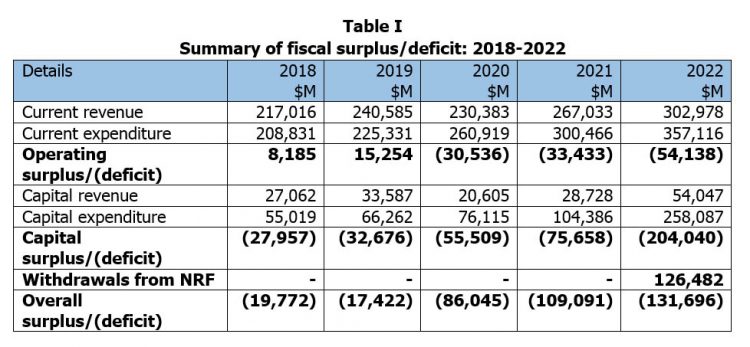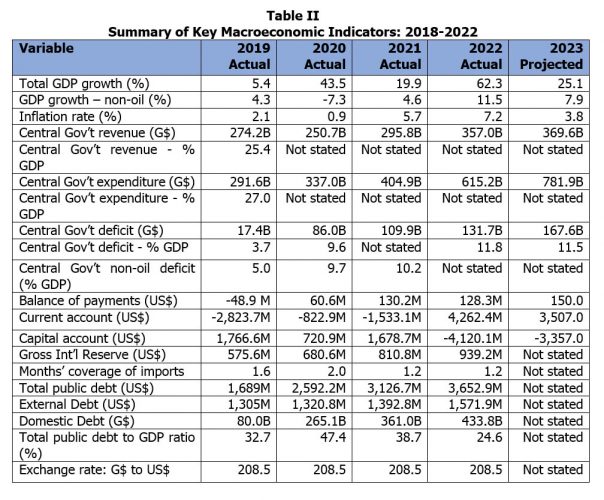There shall be a Committee of the whole Assembly to be called the Committee of Supply. The deliberations of the Committee shall be in public. It shall be the duty of the Committee of Supply to consider the Estimates and Supplementary Estimates of Expenditure, and Statements of Excesses presented to the Assembly.
Standing Order No. 72 of the National Assembly
A little over a week ago, an iceberg almost the size of Greater London broke off the Brunt Ice Shelf in Antarctica, following years of naturally occurring cracks that extended across the Shelf. This was the second major calving from the ice shelf within the last two years. Over in the north, the Greenland Ice Sheet, which is the second-largest ice sheet on Earth, is undergoing exceptional warming with temperatures from 2001-2011 being the warmest in the past 1,000 years. These occurrences have significant implications for sea level rise, drought conditions, wildfires, rainfall and hurricanes, the severity of which have already been felt across the globe and are more likely to continue in the foreseeable future.
On the corruption front, 15 high-level public officials in Ukraine have been fired or have resigned as a result of corruption scandals, including the Deputy Minister of Infrastructure who reportedly received a bribe of over US$400,000. The Defence Ministry was also accused of purchasing food items for the military at three times the prices of the supermarket. According to Transparency International (TI), Ukraine adopted a new national anti-corruption strategy last year and continues to prioritise other anti-corruption reforms. These measures have resulted in a seven-point improvement on the Corruption Perception Index (CPI) over the period 2013 to 2021. During the same period, Guyana’s CPI score moved from 28 to 39, an eleven-point increase, mainly due to various initiatives undertaken during the period 2015 to 2019. Tomorrow, TI will release the 2022 CPI, and it will be of interest to learn how Guyana has been assessed.
This is our third article on the 2023 Estimates of Revenue and Expenditures. In the first article, we urged the Authorities to exercise caution in order to avoid the Dutch disease and resource curse in the light of discovery of some eleven billion barrels of crude oil resources. This year marks the second year that Guyana’s share of oil revenues will be used to assist in the financing of public expenditure. We also commented that it is good that we are having early budget, though we would have preferred if an approved budget is in place before the commencement of the fiscal year to allow budget agencies enough time to execute their programmes and activities. In this regard, we alluded to our experience of 2015 and 2020 when Parliament was dissolved without an approved budget in place, and the difficulties experienced in accessing funds from the Consolidated Fund in the light of certain restrictions placed by the Constitution.
Additionally, we spoke of the need to conduct a thorough evaluation of all programmes and activities vis-à-vis their objectives, outputs, outcomes and impacts. Those that are not performing as intended, and their output, outcomes and impacts are not commensurate with those intended, should either be modified or eliminated altogether as a cost-saving measure. At the moment, the focus in on input only, and there is hardly any consideration as to whether good value for money has been achieved. Finally, we appealed to our legislators to set aside partisan political interest and embrace the national interest as they proceed to consider the Estimates.
As regards last week’s article, we provided a summary of Guyana’s economic performance for the fiscal year 2022 and its state of affairs as at the end of that year. Today, as the Assembly resolves itself into the Committee of Supply to consider the proposed allocations to individual Ministries, Departments and Regions, we conclude our coverage of the 2023 Estimates.
Follow-up on last week’s article
There was a mistake in our computation of the actual fiscal deficit for 2022 at Table I in last week’s article. The correct amount is $131.7 billion and not $177.8 billion. We regret the error and reproduce below the corrected version of the table.
In any event, the figures for 2022 are only tentative and are subject to change when the draft public accounts are finalized by 30 April, and may change further after they have been audited. We therefore have to wait until mid-October when the audited public accounts become publicly available, to confirm the exact amount of the fiscal deficit.
In a related matter, in our article of 12 December 2022, we had stated that, taking into account the three supplementary estimates that were approved in 2022: (i) the revised estimate was $645.0 billion; (ii) the budgetary fiscal deficit increased from $86.046 billion to $178.046 billion; and (iii) considering that the deficit would be financed from withdrawals from the Natural Resource Fund (NRF), the budgetary deficit would be reduced to $51.382 billion. After careful examination of the 2023 Estimates presented to the Assembly on 16 January 2023, it turns out that the withdrawals from the NRF were taken into account in the computation of the original budgetary fiscal deficit of $86.046 billion. Therefore, the revised budgetary fiscal deficit would remain at $178.046 billion.
The withdrawals from the NRF have been treated as current revenue in the Estimates, whereas the bulk of the funds, if not all, would have been used to fund the Government’s infrastructure development programmes. The withdrawals should have therefore been considered as capital revenue. In fact, the Section 16(2) NRF Act specifically states that the NRF withdrawals should only be used for (i) national development priorities, including any initiative aimed at realizing an inclusive green economy; and (ii) essential projects that are directly related to ameliorating the effects of a major natural disaster. This implies that the withdrawals should not be used to meet current expenditure.
The actual fiscal deficit for 2022 of $155.5 billion, as reported by the Minister, will have implications for the operations of the Consolidated Fund. For decades, the Fund was heavily overdrawn due to the incurrence of expenditure that exceeded revenue collections. Each year the overdraft kept increasing whenever a fiscal deficit was recorded, and as of June 2021, it stood at $171.363 billion. In order to liquidate the overdraft, the Government issued debentures in the sum of $200 billion, resulting in the Consolidated Fund reflecting a positive balance for the first time since 1992 and earlier. However, this was not the result of an improvement in the financial position of the country. Rather, it was the contracting of a long-term debt to liquidate what was supposed to have been short-term borrowing. With an opening balance of $12.284 billion, and considering the fiscal deficit for 2022, the Consolidated Fund would have once again gone into an overdraft, this time by at least $120 billion.
The Natural Resource Fund
Amounts totalling US$607.6 million were withdrawn from the NRF to finance the 2022 Budget. This is the maximum amount allowed by the NRF Act to be withdrawn. We regret the absence of the Macroeconomic Committee to advise on the maximum economically sustainable amount that could be to be withdrawn from the Fund without diminishing the competitiveness of the economy. Factors that would have had to be taken into account include: (i) the impact of past spending financed by withdrawals from the Fund; and (ii) potential impact of future spending financed from the Fund taking into account, among others, inflation, exchange rate, balance of payment, economic growth and the public debt. These provisions were contained in the predecessor legislation and have been replaced by a schedule of predetermined amounts to be withdrawn.
At the end of 2022, the overall balance in the NRF was US$1,271.8 million. In accordance with the First Schedule of the Act, the maximum amount that could be withdrawn in 2023 is US$1,010.9 million. In this regard, the 2023 Estimates showed an amount of G$208.945 billion, equivalent to US$1,002.1 million, that will be withdrawn from the Fund, leaving a relatively small balance of US$269.1 million to be carried forward to 2024.
There was no mention in the Minister’s speech of the status of the Petroleum Commission Bill which was presented to the Assembly in 2017 and referred to a Special Select Commission for detailed review. The Bill provides to the establishment of a Petroleum Commission to oversee and manage the oil and gas industry by ensuring, among others, compliance with the policies, laws and agreements relating to petroleum operations, including compliance with health, safety and environmental standards as well as local content and participation requirements. It will also be responsible for researching efficient, safe, effective and environmentally responsible exploration, development and production of petroleum in Guyana, including the optimum methods of exploring and extracting petroleum and petroleum products.
Macroeconomic targets for 2023
The following is a summary of the macroeconomic targets for 2023, as reflected in the Minister’s budget speech:
(a) Real GDP is projected to grow by 25.1 percent, with non-oil growth expected to be 7.9 percent;
(b) The rate of inflation is forecast to slow to 3.8 percent;
(c) The overall balance of payments is expected to record a surplus of US$150 million after taking into account a current account surplus of US$3,507 million and a capital account deficit of US$3,357 million;
(d) Central Government current revenue (net of GRIF and Carbon Credit inflows and NRF withdrawal) is projected at $335.3 billion, while capital revenue is expected to be $111.3 billion;
(e) Central Government current expenditure is projected at $394.1 billion, while capital expenditure is expected to be $387.8 billion;
(f) The overall fiscal deficit is projected at $167.6 or 11.5 percent of GDP; and
(g) The size of the budget is $781.9 billion, an increase of 44.4 percent over 2022.
Table II provides a summary of the key macroeconomic indicators for 2022, along with comparative figures for the previous three years as well as projections for 2023:
Budget measures
The following is the list of budget measures announced by the Minister:
(a) Salary adjustments for health care workers and Disciplined Services to address anomalies and disparities across the Public Service. There was, however, no mention of other categories of government employees, such as, teachers and civil servants;
(b) Increase in income tax threshold from $75,000 to $85,000 per month;
(c) Increase in cash grant to school children from $25,000 to $35,000, including students attending private schools;
(d) Continuation of adjustment to freight charges to pre-pandemic levels;
(e) Expansion of the part-time job programme for which an allocation of $10 billion is made;
(f) Allocation of $5 billion for additional cost of living measures to be determined from community engagements.
(g) Increase in old age pension from $28,000 to $33,000 per month;
(h) Increase in public assistance from $14,000 to $16,000 per month;
(i) Increase in low-income mortgage ceiling from $15 million to $20 million;
(j) Removal of VAT on the sale of residential properties;
(k) Removal of VAT on electric motor vehicles less than four years old;
(l) Increase in writing-down allowance to 50 percent annually for all electric motor vehicles;
(m) Reduction in duty from 45 percent to 35 percent on the importation of vehicles less than four years old and below 1500 c.c.; and
(n) Replacement of current tax rate to a flat rate of $800,000 for the importation of vehicles that are four years and over old, and below 1500 c.c.








